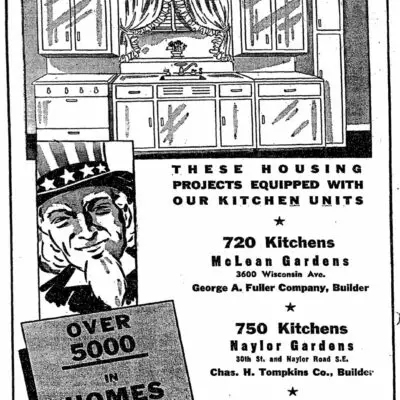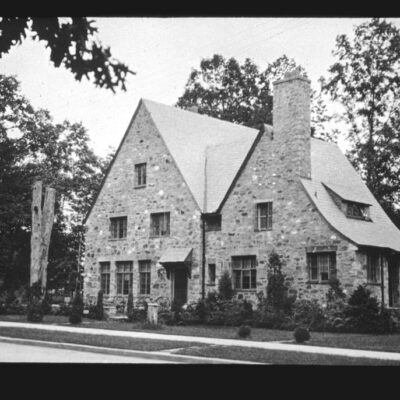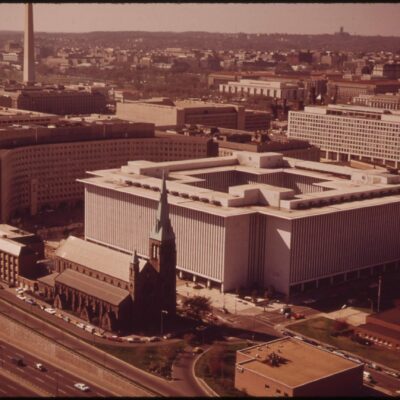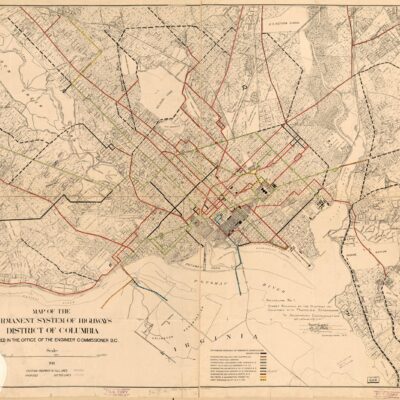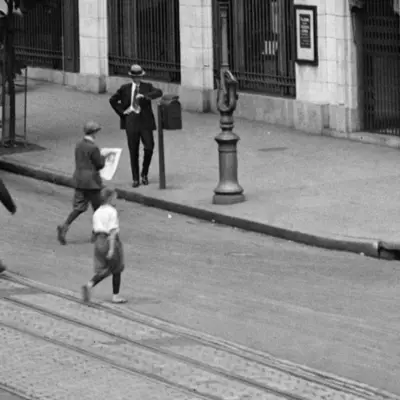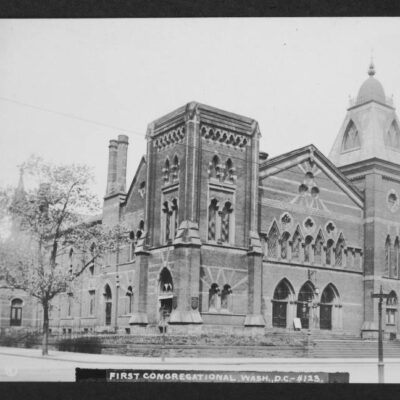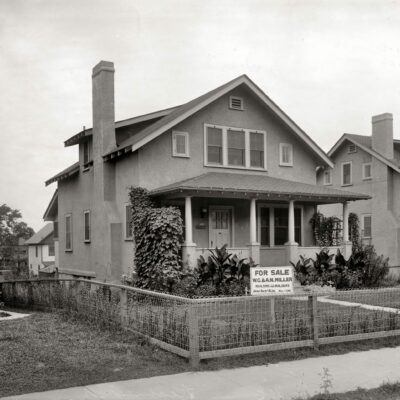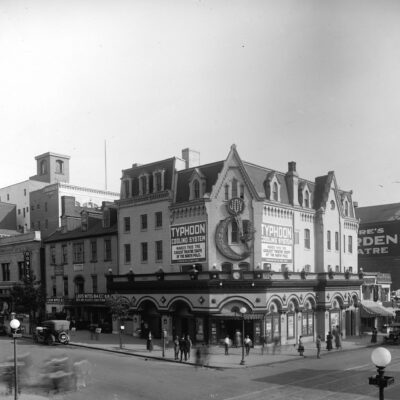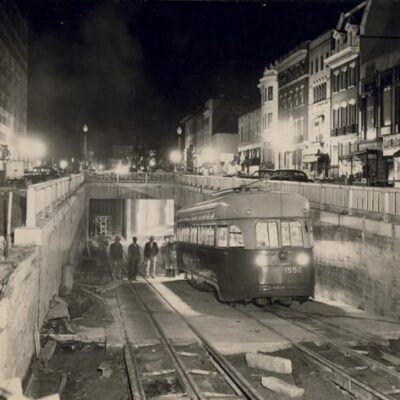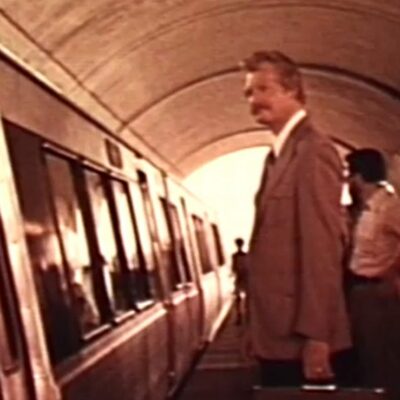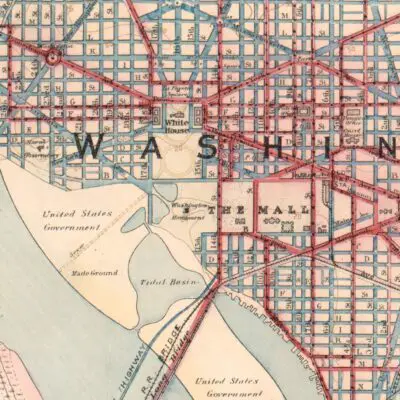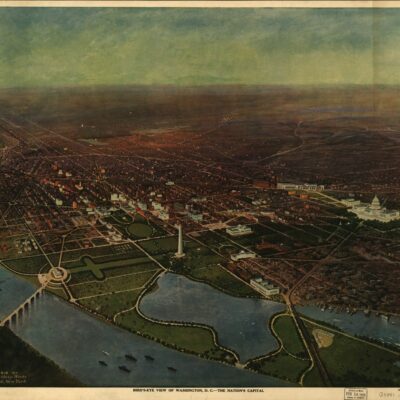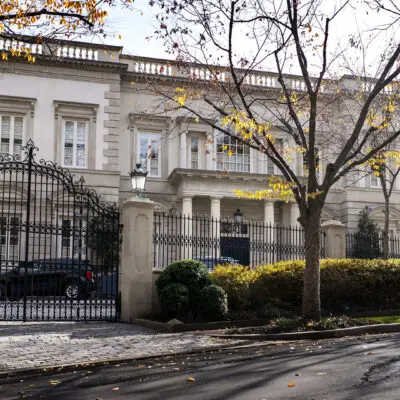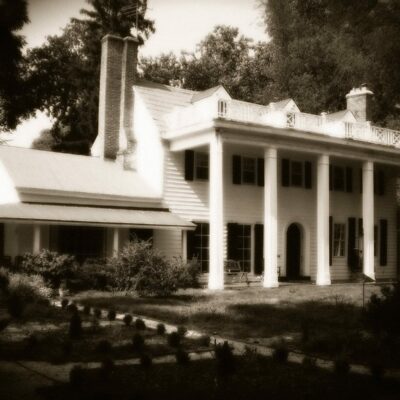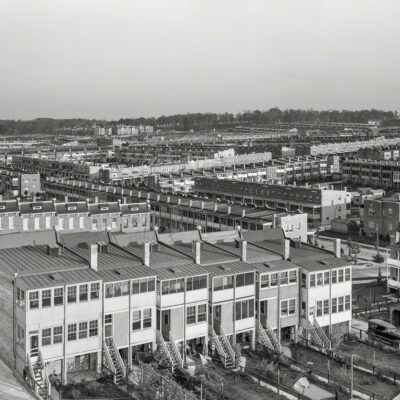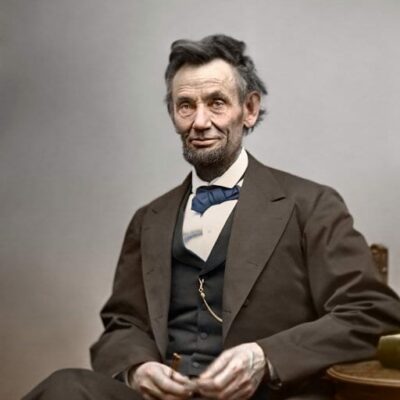The street names don’t always make sense in Columbia Heights, nor do they truly conform to the grid system of Old City (ie, below Boundary Street – now Florida Avenue).
Take a look at the map below. Things don’t look right. Kenesaw Ave. is now Irving St. Whitney Ave. is Park Rd. Howard is Newton and Sheridan is Monroe (Lydecker is also Monroe). At least Meridian was Meridian. Check out a larger version at the Library of Congress.
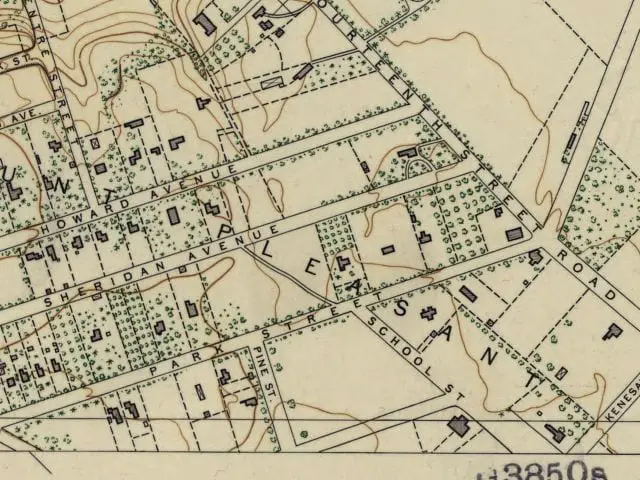
In May 1904, Congress gave the authority to District Commissioners to rename the streets in the Columbia Heights suburbs under the existing nomenclature system (i.e., alphabetical and orderly). This happened unilaterally of course, without any input from those that lived in Columbia Heights, so as you can imagine, the citizens association was not thrilled with the idea.
Below is a quote from the Washington Post on May 4th, 1904.
Judge McCalmont led the opposition to the resolution. “This thing of having mathematical accuracy to everything I do not believe in,” he said, with considerable emphasis. “The scheme of naming these streets Yale, Harvard, and Princeton was a good one. They are significant of nice schools, names of colleges held in affection, and why should they not remain? I believe that the people should have something to say in the naming of their streets. Our people know enough to find the way home.” He held up for ridicule the A B C system and the lack of sentimentality which the names would possess.
Well, McCalmont was not effective in his push to halt to attempt to better structure the street names around Columbia Heights. Only a year later, on August 2nd, 1905, the Washington Post reported on the pending name changes. By the way, this is fascinating because these are all the street names we know that define where we live and this was the moment when they were made public.
A revolution in the names of streets in the section of Washington bounded generally by Rock Creek Park and the Zoological park on the west and North Capitol street on the east is shown by many new names which were announced yesterday by the Commissioners. The numbered streets extend northward to the District line and the lettered streets, as far as the end of the alphabet, are extended into the District outside of the old city limits of Florida avenue. Until the alphabet is exhausted names of two syllables, alphabetically arranged, are given, and then names of three syllables are selected.
…
Columbian College Grounds, north part–Bacon street changes to Harvard street, and Binney street changed to Girard street.
Columbian College grounds, south part–Chapin street unchanged, and Staughton street changed to Buford street.
Columbia heights–Clifton street changed to Douglas street, Roanoke street changed to Euclid street, Yale street changed to Franklin street, Princeton street changed to Girard street, Harvard street not changed, Columbia street changed to Columbia road, Kenesaw street changed to Irving street, Kenyon street not changed, Dartmouth street changed to Lawrence street, and Whitney avenue changed to Marshall road.
Denison & Leighton’s subdivision–Kenesaw avenue changed to Irving street, and Grant street changed to Lawrence street.
Gass subdivision–Whitney avenue changed to Marshall road, and Scott avenue changed to Newton place.
Haw’s subdivision–Grant avenue changed to Barry place.
Howard University subdivision–Wilson street changed to V street, Pomeroy street changed to W street, Trumbull street, east of Fourth, changed to Bryant street; Howard avenue changed to Howard place, Lincoln street changed to Franklin street, Sumner street changed to Girard street, Colfax street changed to Gresham place, and Morris street changed to Hobart place.
Holmead Manor–Rock Creek Church road changed to Marshall road, Lydecker avenue changed to Monroe street, Holmead avenue changed to Holmead place, Eslin avenue changed to Eleventh street, Morgan avenue changed to Tenth street, and Lamar place changed to Otis place.
Wait, you’re not recognizing half of these new names are you? There were literally hundreds of name changes published in the Washington Post for every new suburb in Washington (i.e., Woodley Park, Columbia Heights, Cleveland Park). The District Commissioners were defining the city as we would come to know it today and it took a few more iterations before the names stuck.

Another article published by the Washington Post on October 15th of that year had some more recognizable, contemporary names.
Col. John Biddle, the Engineer Commissioner, submitted to his colleagues of the District board yesterday the completed schedule of changes in the names of streets in the suburban territory north and northwest of Florida avenue. The schedule was practically adopted by the board last Wednesday, six names being held under consideration until yesterday. The list of streets and names follows:
Columbian College Grounds (North part)–Bacon to Harvard, Binney to Girard.
Columbian College Grounds (South part)–Chapin unchanged, Staughton to Belmont.
Columbia Heights–Roanoke to Euclid, Yale to Fairmount [sic], Princeton to Girard, Harvard not changed, Columbia street to Columbia road, Kenesaw to Irving, Kenyon not changed, Dartmouth to Lamont, Whitney avenue to Park road.
Denison and Leighton’s subdivision–Kenesaw avenue to Irving street, Grant to Lamont.
Gass subdivision–Whitney avenue to Park road, Scott avenue to Newton place.
Halls’ subdivision–Eighth to Ninth
Haw’s subdivision–Grant avenue to Barry place.
Howard University subdivision–Wilson to V, Pomery to W, Trumbull, east of Fourth, to Bryant; Trumbull, west of Sixth, not changed; Howard avenue to Howard place, Lincoln to Fairmount, Sumner to Girard, Colfax street to Gresham place, Morris street to Hobart place.
Holmead Manor–Rock Creek Church road not changed, Lydecker avenue to Monroe street, Holmead avenue to Holmead place, Eslin avenue to Eleventh street, Morgan avenue to Tenth street, Lamar place to Otis place.
This sounds like a horribly chaotic process for naming the streets. I can imagine sitting in the meeting where two men are fighting over calling Dartmouth Street Lawrence or Lamont Street. Does it matter in the long run? No, but if the dude’s name was Lawrence, he’s probably pissed to this day.
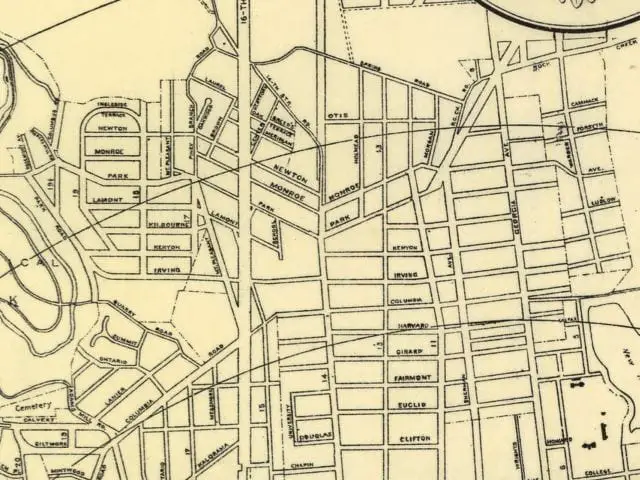
Here is my favorite letter to the editor for the week. This is from Tillman Joy, Columbia Heights resident, who was less than pleased at the half-hearted attempt at an orderly naming convention for the streets. Tillman’s letter was published by the Post on Christmas Day, 1929.
Quite a number of years ago the authorities adopted a scheme for the systematic naming of streets added to those already regularly lettered, numbered and otherwise named. Naturally, it was thought that in its future growth the city would be free from the antiquated, unsystematic arrangement with which it was threatened. But it was not to be. At least, it was not to be, so far as Columbia Heights, where I reside, is concerned. For some reason, or no reason, old local names were retained, and in the case of new streets names were fixed according to the sentimental wishes of individuals or the whim of the street-naming expert.
With no regard for numerical and alphabetical sequence, we find distributed through the Heights Brown, Center, Oak and Pine streets, Hiatt place, Meridian place, Mozart place, Ingleside terrace. And, especially objectionable, there are duplications of names, as in the case of Spring road, Spring place, Park road, Park place, Parkwood place. All this in one neighborhood.
Perhaps it may be objected that it would be sacrilegious, if not impracticable to systematically rename these and other thoroughfares. But to this writer it seems that the possible temporary dissatisfaction of a few individuals which might be involved in their renaming would be very much more offset in the case of the thousands of citizens who, from month to month, are inconvenienced, irritated and outraged by the present arrangement.
